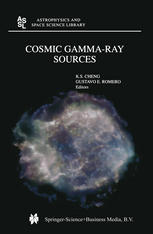

Most ebook files are in PDF format, so you can easily read them using various software such as Foxit Reader or directly on the Google Chrome browser.
Some ebook files are released by publishers in other formats such as .awz, .mobi, .epub, .fb2, etc. You may need to install specific software to read these formats on mobile/PC, such as Calibre.
Please read the tutorial at this link: https://ebookbell.com/faq
We offer FREE conversion to the popular formats you request; however, this may take some time. Therefore, right after payment, please email us, and we will try to provide the service as quickly as possible.
For some exceptional file formats or broken links (if any), please refrain from opening any disputes. Instead, email us first, and we will try to assist within a maximum of 6 hours.
EbookBell Team

4.3
98 reviewsGamma-ray astronomy has undergone an enormous progress in the last 15 years. The success of satellite experiments like NASA's Comp ton Gamma-Ray Observatory and ESA's INTEGRAL mission, as well as of ground-based instruments have open new views into the high-energy Universe. Different classes of cosmic gamma-ray sources have been now detected at different energies, in addition to young radio pulsars and gamma-ray bursts, the classical ones. The new sources include radio quiet pulsars, microquasars, supernova remnants, starburst galaxies, ra dio galaxies, flat-spectrum radio quasars, and BL Lacertae objects. A large number of unidentified sources strongly suggests that this brief enumeration is far from complete. Gamma-ray bursts are now estab lished as extragalactic sources with tremendous energy output. There is accumulating evidence supporting the idea that massive stars and star forming regions can accelerate charged particles up to relativistic ener gies making them gamma-ray sources. Gamma-ray astronomy has also proved to be a powerful tool for cosmology imposing constraints to the background photon fields that can absorb the gamma-ray flux from dis tant sources. All this has profound implications for our current ideas about how particles are accelerated and transported in both the local and distant U niverse. The evolution of our knowledge on the gamma-ray sky has been so fast that is not easy for the non-specialist scientist and the graduate student to be aware of the full potential of this field or to grasp the fundamentals of a given topic in order to attempt some original contribution.